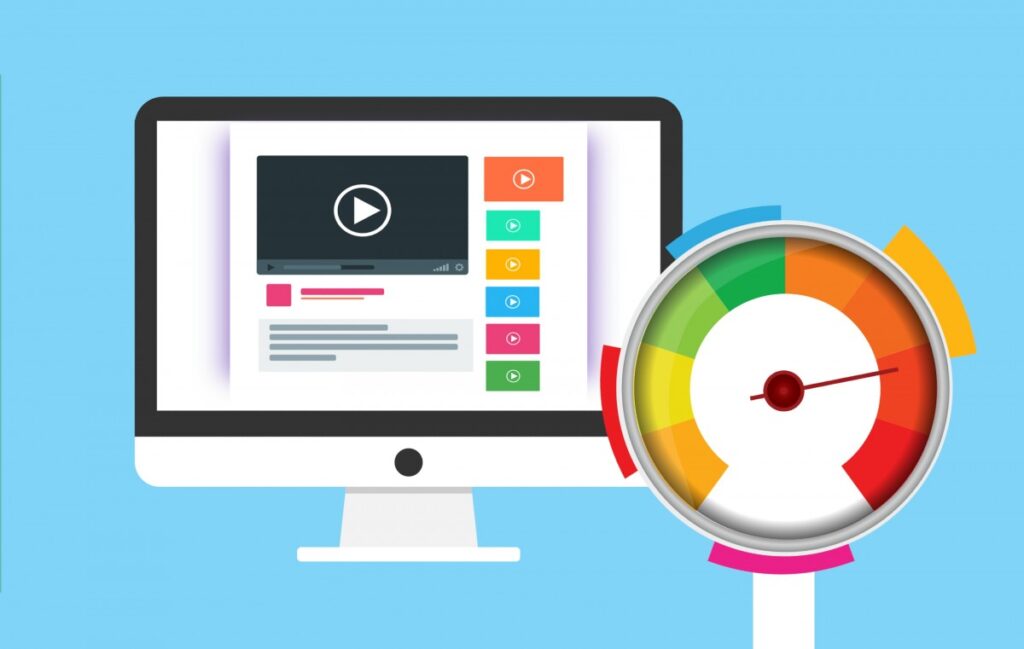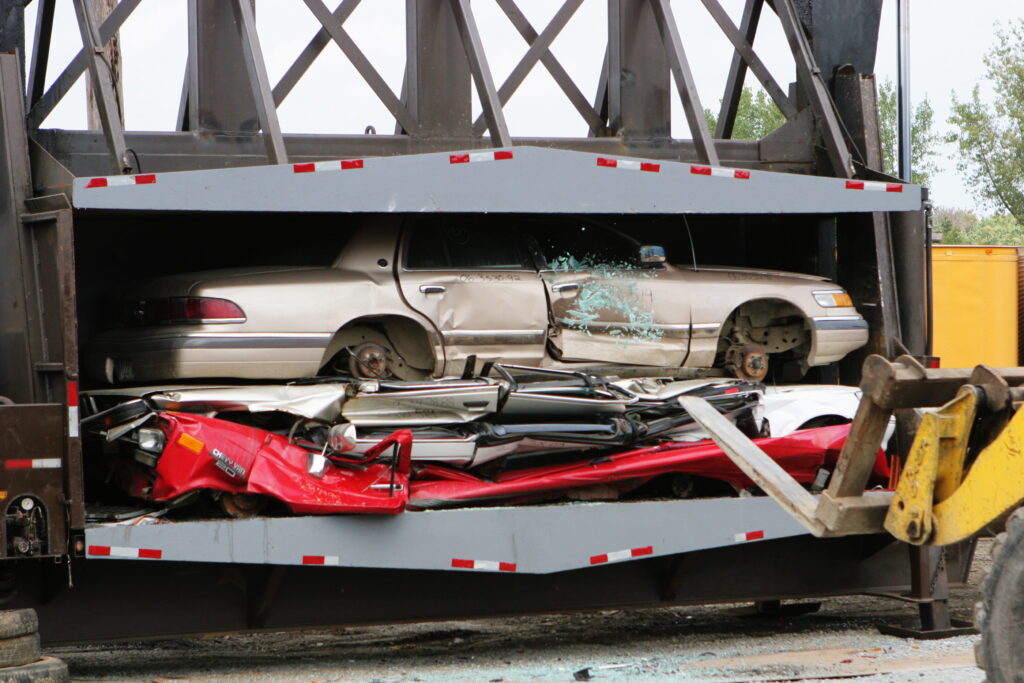
It was in 2010 when Google announced that the website loading speed would be used as one of the factors in their SERP. Therefore, your page loading time directly impacts your traffic, lead generation, and conversion rate. If your site is packed and slow, it will not appear prominently on the search results. It will be difficult for the users to find you when they are using non-branded keywords. Slow loading speed also leads to poor UX. Studies show that users will not wait more than 2 seconds for the page to load.
How Do You Know if Your Website Loading Speed is Slow?

The first thing that you can do is to perform a website loading speed test. You can use different tools that will give you an insight into the loading time and the issues behind it. Moreover, it will only take a couple of seconds to complete the scanning of your website.
- Google PageSpeed Insight- We understand that improving the speed of your website will not be a simple task. However, with Google PageSpeed, you will be given comprehensive information on the components that need to be fixed. It could be poor design coding or bulky images.
- Yslow- Like PageSpeed, Yslow will analyze your website and suggest some of the best ways to improve it.
- Pingdom- It is a reliable and cost-effective way to monitor the speed of your website.
What is Website Loading Speed Time?

Web page load time or loading speed pertains to the length of time needed for the website to appear or load on-screen fully. It should include all the components that you can find on the page, including the text, ads, images, videos, and others. Multiple factors like widgets, plugins, hotlinking, poor coding, web host provider, file size, user behaviour, and page type could affect the page speed. Moreover, you should also consider the device used by your audience. For instance, your load speed when using the mobile device could be a lot slower. With Google prioritizing mobile-friendliness when indexing, you should really look into website loading speed optimization.
Numbers Related to Website Loading Speed Optimization

Based on the reports released by Portent, the best loading speed to achieve the highest conversion rate would be 0-4 seconds. For every additional second (from 0-5 seconds), the conversion rate will be reduced to about 4.42%. It could be highly problematic, especially if you consider the mobile website loading speed. According to Google, it will take an average of 15.3 seconds for the website to load on mobile devices.
In an Unbounce survey last 2019, around 70% of the consumers claimed that the website’s load time affects their willingness to do business with the company. During the survey, they also found out that most consumers would rather skip animation and explainer videos in exchange for speed. An additional 10-second increase in your loading speed will boost the bounce rate to more than 123%.
If you are running an eCommerce website, the optimal website loading speed for conversion rate would be 1-3 seconds. So, be sure to perform website loading speed test regularly to fix any possible issues in advance. One way on how you can save speed is by compressing the text and image files. While most traffics are occurring on 4G and 5G connections, the site’s load speed is still poor due to different page elements.
What Should You Do to Improve Your Website Loading Speed?

Before enumerating the possible fix for your slow loading speed, understand that there is no sure way to do this. Some methods may provide you with a better result, depending upon your website’s structure, set-up, and nature. However, if you want to ensure that your speed is ideal for lead generation and conversion, you will need to perform as much website loading speed optimization as possible.
Choosing Your Webhost Provider

Every web host provider will offer different features and benefits, especially on the side of performance. However, it can be pretty difficult to compare the performance of the web hosting sites with dedicated servers. Ideally, it would be better to choose a company that offers excellence in all factors. They all claim that they can provide you with the fastest website loading speed, so it is your job to compare the plans, packages, features, and price. Don’t rely on the company’s website when gathering information; look for independent review sites and customer reviews. Social media sites would be a good source of authentic reviews. If you choose the right one, you can guarantee that your website will be ultra-fast.
Take Advantage of Browser Caching

Caching is a crucial step for website loading speed optimization. Once you enable this option, you are instructing your audience to save some or all of your static files. By doing so, you can guarantee that your site will load fast the next time they visit your page. They should not be worried since this is just temporarily saving your information. It is a way to bypass the need to reload your site thoroughly. Your returning audience will find your website faster during their subsequent visits. If you have a WordPress Site, there are various ways on how you can activate this. If you are still not using this, now would be the perfect time to activate this.
Configure Your “Keep Alive”

When a person visits a website, the browser will make a connection to the server. It is important to fetch the files needed to load the website. If your server does not have a proper configuration, the browser will make a separate connection for each file that needs to be transferred. It is not a practical way to load a website that comes with hundreds of components. The best way to avoid this problem is to enable the “keep alive’ on your server. Usually, all NGINX and Apache servers will use a persistent connection. Nonetheless, if you are not entirely sure how to configure this, you can check the official site of NGINX and Apache. After that, perform a website loading speed test and observe if there is an improvement.
Leverage Gzip Compression to Improve Website Loading Speed

Like its name, GZIP is a method that compresses and reduces the size of the file and elements found on your website. It ensures that their mobile website loading speed will be optimal. Usually, enabling this option can reduce the size of the page by as much as 70%. A website that has a reduced weight will expectedly load faster than an overloaded site. Different web hosts providers will enable this option. Be sure to ask them about this option to guarantee that you are choosing the best plan package. If this is not activated on your WordPress site, you can check this step-by-step procedure.
Using a Plugin
It may be challenging to search for a plugin that will be intended to enable Gzip compression. However, you don’t necessarily need one. Different website loading speed optimization plugins will offer this feature. You can use WP Super Cache. While this is primarily a caching solution, it also allows you to compress the files on your site. Navigate to the setting of WP Super Cache and click on the Advance tab. Look for the Compress Page option and make sure that there’s a check on the box beside it. Tap on the Update Status to save your settings.
Modifying .htaccess File.

The option above is the simplest way to enable site compression and improve your website loading speed. However, if you are looking for an alternative method and don’t want too many plugins on your site, you can do the compression manually. To start, you will need to use SFTP (Secure File Transfer Protocol). It allows you to directly access the file of the website and make changes accordingly. Those who are not familiar with this should first install Filezilla and refine their SFTP skills. Once you have accessed the file using Filezilla, it should present it in an organized manner. Look for the folder that has the name of your website and click it. Remember that this is your core file, and you need to be extra careful when making changes. Look for the .htaccess file, right-click it and then Download. Paste the code that will enable you Gzip compression.
If Possible, Limit Your Landing Page Redirects
A couple of years ago, marketers and web designers will remind you to set up a mobile-friendly website to improve user experience and SEO purposes. Keeping this approach in mind, you will be forced to develop a landing page redirect. It will send the mobile audience to the appropriate page and make the website cacheable to load the website faster. Nowadays, more users are using mobile devices to access the website than those who use their desktops. It will not be wise to develop several versions of your website. You want one mobile-friendly and responsive site that will scale in different resolutions. It is best to stay away from redirect if possible to improve your mobile website loading speed.
Using CDN to Improve Website Loading Speed

Almost all kinds of hosting (except cloud) websites can be found in the central server in a particular location. Your visitors will need to establish a connection to this server before your website will be loaded. This process will often cause bottlenecks. CDN pertains to the set of servers that store and copies your webpage. For instance, your site’s server could be found in the US, but it may use CDN with a server located in Asia. Therefore, if someone from South Korea visited your web page, the CDN that hosts your site will serve this Asian audience.
There are two benefits that this approach provides. It helps ease the load on the server, and it translates to a faster website loading speed. Here are different CDN solutions that are available for WordPress users. However, all these come with specific charges. Nonetheless, if you are running a popular website or a website for an international brand, making this investment can significantly reduce your load speed.
Fix Your Broken URL

Apart from its impact on your page performance and SEO, a broken URL can significantly impact the result of your website loading speed test. If you have a lot of broken URLs, it will prevent the search engine robots from indexing your webpage. It will cost you in the long run. People will also think that you are not properly maintaining your website.
You may notice that your bounce rate is higher than the average if you have a lot of broken links. To ensure that there are no problems with your website, you could manually check your website regularly. You may do this using tools like Google Search Console and Screaming Frog. If you found a broken URL, you may quickly fix this using a plugin, or you can do it manually. You should also check if you have a wrongly configured .htaccess file in the process since this can also lead to broken links.
CSS Should Be on Top, Java on the Bottom
The top pertains to the header, and the bottom would be the footer in terms of the web page. When visiting a website, the browser will need to load the script found on the header first before loading the rest of your page. It will not be a problem that you will encounter on CSS. If you block the CSS or remove them, the site will remain functional. However, it may not look aesthetically pleasing. Javascript will not be crucial when rendering the page. For instance, you may have added a code that simplifies and empowers the email submission form or your website analytics. You can move the HTML code on the footer, and it will still function once the website is loaded.
Optimizing Website Images

When was the last time that you encountered a website or web content without images? You probably cannot remember the answer, and this is not a coincidence. Image can separate long paragraphs, and it is an integral part of modern web design. Unfortunately, images that are high quality and with high resolution will increase the file size of your website, increasing the website loading speed in the process. You have two options to fix this; compress the image or resize the picture. There are plugins that you can use that will automatically compress the image. There is just no sense in adding an image with high resolution, especially if users access your website through a mobile device.
Website loading speed optimization can seem to be an overwhelming process. However, by following the advice mentioned above, you can significantly reduce it. You don’t have to implement all of them at the same time. As your website grows and the organic traffic increases, you can apply small changes that will fine-tune your site’s performance.



When I initially commented I appear to have
clicked on the -Notify me when new comments are added- checkbox and from now on every
time a comment is added I receive 4 emails with the exact same comment.
Perhaps there is a way you can remove me from that service?
Kudos!
Look at my web-site: nordvpn coupons inspiresensation (https://Tinyurl.com)
I am really impressed with your writing skills
and also with the layout on your weblog. Is this a paid theme or did you customize it yourself?
Either way keep up the excellent quality writing, it is rare to see a
nice blog like this one these days.
Here is my website – nordvpn Coupons inspiresensation
I’m not sure exactly why but this site is loading incredibly slow
for me. Is anyone else having this problem or is it a issue
on my end? I’ll check back later on and see if the problem still
exists.
Take a look at my blog – nordvpn coupons inspiresensation (t.co)
nordvpn 350fairfax
You really make it appear so easy along with your presentation but I find this topic to be really something which I think I
would by no means understand. It sort of feels too complex and very
broad for me. I am having a look ahead on your subsequent post, I’ll try to get the hold of it!
Also visit my web blog – nord vpn coupon codes
Реставрация бампера автомобиля — это актуальная услуга, которая позволяет восстановить заводской вид транспортного средства после мелких повреждений. Современные технологии позволяют убрать сколы, трещины и вмятины без полной замены детали. При выборе между ремонтом или заменой бампера https://telegra.ph/Remont-ili-zamena-bampera-05-22 важно учитывать уровень повреждений и экономическую выгодность. Экспертное восстановление включает шпатлевку, грунтовку и покраску.
Смена бампера требуется при серьезных повреждениях, когда реставрация бамперов невыгоден или невозможен. Цена восстановления зависит от материала изделия, масштаба повреждений и модели автомобиля. Полимерные элементы допускают ремонту лучше металлических, а новые композитные материалы требуют особого оборудования. Грамотный ремонт увеличивает срок службы детали и обеспечивает заводскую геометрию кузова.
Всегда откликнусь к вашей просьбе за содействием по вопросам Замена бампера киа рио 2014 – стучите в Telegram sfo78
Howdy! I just want to give you a big thumbs up for your great information you have here on this post.
I am coming back to your blog for more soon.
Review my web blog :: vpn
Great post. I was checking continuously this blog
and I am impressed! Extremely helpful info specifically the last part 🙂 I care for such information much.
I was seeking this certain information for a long time.
Thank you and good luck. gamefly https://tinyurl.com/2ah5u2sb
Thanks for one’s marvelous posting! I quite enjoyed reading it, you can be a great author.
I will always bookmark your blog and will come back someday.
I want to encourage you to ultimately continue your great job, have a nice evening!
https://tinyurl.com/2dhs6xmh what does vpn stand for
You actually make it seem so easy together with your presentation however
I find this matter to be actually one thing that I believe I’d by
no means understand. It kind of feels too complex and extremely large for me.
I’m taking a look forward to your subsequent publish, I’ll attempt to get the dangle of
it!
This design is spectacular! You most certainly know how to keep a reader entertained.
Between your wit and your videos, I was almost moved to
start my own blog (well, almost…HaHa!) Excellent job. I really
enjoyed what you had to say, and more than that, how you presented it.
Too cool!
Hi! I’ve been following your web site for some time now and finally got the bravery to go ahead and give you a shout
out from Porter Texas! Just wanted to tell you keep up the fantastic job!
Eharmony special coupon code 2025 https://tinyurl.com/yvodnsan
Слив курсов ЕГЭ математика https://courses-ege.ru
pronostics du foot pariez sur le foot
pronostic foot gratuit melbet – paris sportif
Подробности по кнопке: http://minregion.ru/publication/6270-vybor-tehnologii-pechati-bumagi-i-otdelki-v-tipografii-polnyy-gid.html
chery tiggo 1.6 chery tiggo купить
All the details at the link: https://dadyolk.com/kupit-pochty-gmail-ot-3-rublej-3/
Can you be more specific about the content of your article? After reading it, I still have some doubts. Hope you can help me.
Wir bieten Ihnen ein breites Spielangebot, eine einzigartige angenehme
Atmosphäre und hochwertigen Service an. Das Grand Casino Aš bietet seinen Gästen neben dem Casino auch einen Garten, in dem Sie sich entspannen können. Für
weitere Mahlzeiten steht ein Restaurant zur Verfügung, das auch Sitzgelegenheiten im
Freien auf der Terrasse bietet. Das Grand Casino Aš bietet seinen Gästen nicht nur ein aufregendes Casino-Erlebnis, sondern auch komfortable Zimmer,
ein Restaurant, eine Bar und kostenfreies WLAN.
Das Grand Casino Aš befindet sich am Grenzübergang Aš – Selb.
Die Spielotheken bieten nicht nur Unterhaltung, sondern tragen auch zur lokalen Wirtschaft bei.
Die Spielotheken Asch bieten Glücksspielbegeisterten eine vielfältige Auswahl
an Unterhaltungsmöglichkeiten. Von Merkur über Novoline bis hin zu
Bally Wulff – hier findet jeder Glücksspielfan sein Lieblingsgerät.
References:
https://online-spielhallen.de/joo-casino-test-erfahrungen-2-550-spiele/
Mit der Sicherheit und Anpassungsfähigkeit eines regulierten Casinos bietet Mr.
O Casino eine erstklassige Spielerfahrung. Erhalten Sie bis zu
500 Freispiele bei Ihrer ersten Einzahlung und
sammeln Sie Treuepunkte für exklusive Prämien bei Mr. O Casino!
Es gibt auch einige unlautere Bonusbedingungen und -bedingungen, die zu Problemen führen können, wenn Sie sich entscheiden,
die Boni oder die Promotionen des betreffenden Casinos zu nutzen. Mr.
O Casino bietet rund um die Uhr mehrsprachigen Support, großzügige Cashback-Optionen, Turniere und maßgeschneiderte Angebote für deutsche Spieler.
Mr. O Casino ist ein renommiertes Online-Casino,
das ein unvergleichliches Spielerlebnis bietet.
Mr. O Casino bietet ein einzigartiges Spielerlebnis mit einer beeindruckenden Auswahl an Spielen.
Das Problem wurde gelöst, als der Spieler bestätigte, vom Support
eine Klarstellung zu den Bonusbedingungen erhalten zu haben, aus der hervorging, dass seine Gewinne trotz Erfüllung der Wettanforderungen immer noch als
Bonusgeld betrachtet wurden. Deshalb ist es unserer Meinung nach ratsam,
nach einem besseren Online Casino zu suchen, in dem Sie beruhigt spielen können. Zu den Angeboten gehören Willkommensboni, Einzahlungsboni, Freispiele
und spezielle Aktionen für Stammspieler.
References:
https://online-spielhallen.de/ihr-ultimativer-leitfaden-tipico-casino-bonus-codes-verstehen/
Dazu gehören eine Erhöhung des Cashbacks mit dem Wachstum des Status, großzügige Verde casino no deposit bonus codes 2023 und eine immer günstigere Umwandlungsrate, wenn
der Rang steigt. Gleichzeitig werden dem Echtgeldguthaben nicht mehr
als 300 € gutgeschrieben – aus den Willkommensfreispielen und einem Betrag,
der nicht mehr als das 5-fache des Cash Verde casino promo code Bonus beträgt.
In den Briefen finden Sie oft Aktionscodes, bei deren Aktivierung Freispiele oder Verde casino
bonus welche spiele Guthaben gutgeschrieben werden. So
fangen Sie an zu spielen verde casino aktionscode freispiele Egal
ob du verde casino bonusguthaben spielen willst oder einfach auf der Suche nach Spannung, hier ist
für jeden etwas dabei.
Deswegen sind alle Arten von Casinospielen von Spielautomaten bis zu Live Casino
Spielen uneingeschränkt verfügbar. Sollten Sie
im Verde Casino 25 Euro Startguthaben einsetzen oder mit einem anderen Bonus spielen, dann empfehlen wir zunächst, die Liste der ausgeschlossenen Titel
zurate zu ziehen. Die Umsatzbedingung für den Guthabenbonus
beträgt x40, die der Freispiele hingegen nur x30.
Nicht nur einen, sondern gleich mehrere Bonuspunkte kann sich die Spielbank mit dem
Willkommensbonus sichern, den Kunden bald für ihre Einzahlungen erhalten können.
Beide ermöglichen den Kunden eines Casinos, Spiele mit echten Geldeinsätzen zu spielen.
Der Anbieter gibt bei den gratis Freispielen ähnliche Voraussetzungen wie beim Startguthaben vor.
Wir raten Ihnen daher, registrieren Sie sich jetzt im Verde Online Casino und
holen Sie sich gleich den attraktiven Willkommensbonus.
Dafür müssen Sie aber auf keine Casinospiele verzichten, weil es nicht
nur virtuelle Automatenspiele, sondern auch alle anderen Glücksspiele
gibt. Diese sind natürlich auch als Live Casino Spiele
verfügbar, wo noch die beliebten Spielshows im Verde Casino online dazukommen. Dazu gehören die Brettspiele, die
wir eher als Tischspiele bezeichnen würden, wie Poker, Roulette, Blackjack, Baccarat
oder Craps. Dennoch gibt es neben den Verde Casino
Spielautomaten auch jede Menge andere Casinospiele im Spielangebot.